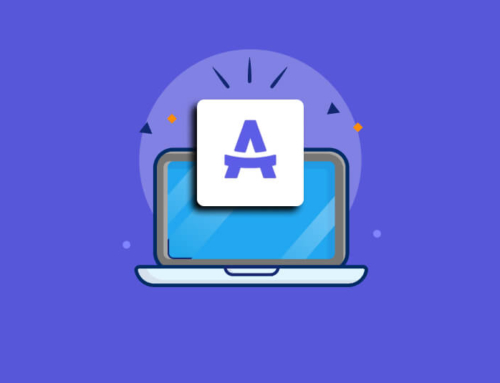Human beings are not always inherently productive. Most likely, every productive person you know has a system that helps them stay focused on their tasks. And that’s what productivity systems do. They help you keep track of priorities so you can decide what to do and when to do it.
However, as you work to cultivate a productive workflow for you and your team, you may run into some challenges. Don’t worry, it’s perfectly normal.
Once you have more than one project to focus on, you’ll need something to help you keep up with them. As soon as your work takes you beyond your desk – to a meeting, or to a new workplace – you’ll need systems that keep you productive wherever you are. And as you continue your work journey for weeks, months, and years, and you may face obstacles. At such times, you will benefit from some tools to help you stay on track.
Fortunately, there are several tools and systems that have been proven to work for all types of work and all types of people. In this article, we present some basics, your starter kit.
Here are some of the most essential and useful systems that can optimize your workflow.

Build business synergy
The Greek origin term “synergy” refers to the active effect of the coordinated work or effort of multiple subsystems in the execution of a complex task or function. Did you know that business synergy is essential to the work environment?
The leader is an essential part in making this synergy happen. The ideal is not to encourage individualism, but rather, to transform your employees into a single “piece” that moves in harmony to transform the workplace into an environment that stands out against the competition.
Keeping a team in sync starts by effectively communicating the principles that guide the organization’s internal conduct. The first step in building a solid infrastructure is to start with a solid foundation. Having defined values will be essential when recruiting, executing projects, and making difficult decisions. In addition, it is also necessary that the team understands the company’s business model and knows how to execute long-term plans. However, these plans can be fluid. Some companies change direction according to the company’s focus or the changes that occur in their market.

Create a routine
Especially in telecommuting, you are likely to encounter obstacles and distractions. Having a regular routine will help lessen these setbacks and help you focus on optimizing performance and being more consistent.
Establishing a routine is key to improving concentration, keeping work organized, and ensuring a high level of productivity. By structuring your day efficiently, you are more likely to achieve better results. Some people get things done most effectively before lunchtime, while others tend to get their creative burst of energy in the evening. Consider when you work best, and, if you can, group your tasks at the time of day that makes the most sense for when you will complete them best.

Use the right communication tool
E-mail. Phone. Face-to-face meeting. Virtual meeting. Message. The options are countless. While there is never a perfect communication channel, sometimes one can be better than the other for different situations. And if you choose the “wrong” channel, messages can be lost, delayed, or unread. There are situations where an email is appropriate and others where a phone call or face-to-face meeting is more suitable.
Choosing the wrong tool can lead to a communication breakdown. If you exchange routine or update information every day, e-mail or other business applications are a good option. On the other hand, if you are trying to resolve a complicated situation filled with misinformation, a phone call or virtual meeting allows for more effective communication. The phone call is efficient for issues that need to be resolved quickly.

Put time limits on your work
Putting a time limit on your work means that you decide in advance how much time you will spend on a particular task: you can set it to a certain number of hours and not a minute more. If you want to increase your productivity before you start any new task, put a time limit on your work. You will quickly see how productive you become after setting a specific amount of time to do the work. Limiting the time you spend on a specific task not only saves you time, but also makes you more conscious about how you spend your time.
You can also, use a platform that allows you to simply press “Start” and “Stop” on a labeled timer to track the time you spend on a task or project. For freelancers, this enables them to organize their day and truly know how much time they spend on each activity.

Create a To-Do List
It’s seemingly simple, but the to-do list may be the most important element in a productive person’s life. You’re probably familiar with the feeling that there’s something you need to do that you can’t remember.
Or, you’ve been in a scenario at work where you’re faced with a mountain of tasks. Unfortunately, these scenarios are quite common. And it’s not necessary. The purpose of a to-do list, and the reason it is so important to your productive life, is simple. It’s about getting that mountain of tasks and ideas out of your head and into a single space.
It’s all on your list, and it’s a complete document. If you think of something new, just add it to the list. Once you’ve created your list, you can edit it, condense it, combine items, omit others – whatever you need. But the hard part will be done. It is important, however, that this is the only list. If it’s anywhere other than the one you’ve designated, you won’t have that same peace of mind.
You may prefer to write tasks on paper or use websites designed to keep your work on track, such as Airdesk. Airdesk lets you see all your tasks, update their status, and mark them as completed. You can organize your task list by distinguishing priority levels. Keeping your task list centralized and accessible wherever you are, allowing you to keep track of tasks and gain greater control over your work.
Did you already know any of these productivity tips? Follow our blog to stay up to date with all our tips and news!






